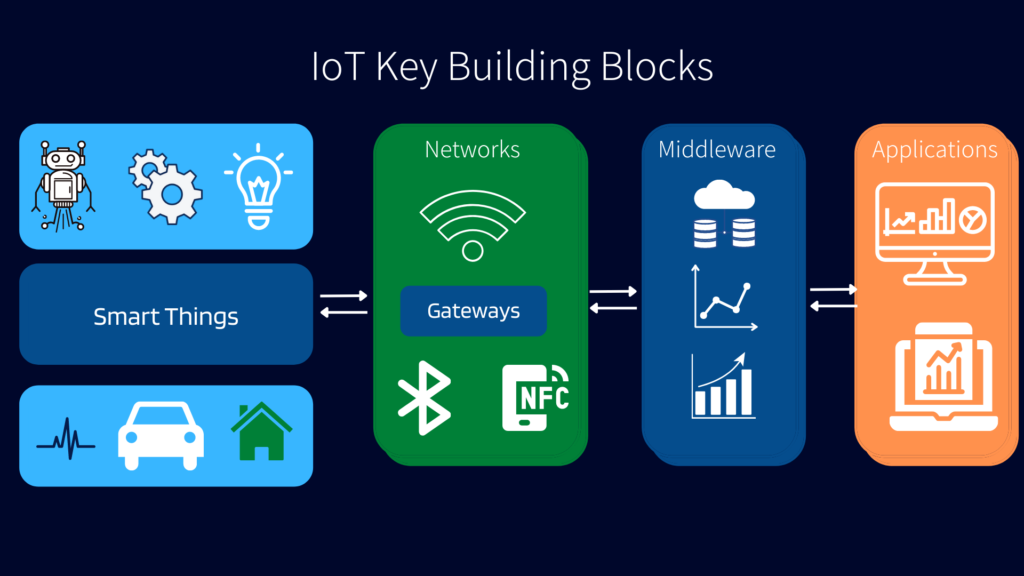How IOT Will Transform Supply Chains In The Future?
Digital disruptions continue to grow at an astonishing speed Internet of Things is revolutionising almost every industry today from retail to transportation in supply chain management IoT brings a significant edge over the competition.
Supply chain management is a nuanced and varied field, and as a business scales, it can become highly complex. Many operations and tasks can unfold at the same time during a single delivery. It depends on the supply chain managers to effectively streamline them.
IoT-based technology can help build large-picture supply chain views. This aids the development of functional and sustainable frameworks for the management of any supply chain. Let’s see how IoT has the potential to revolutionise the supply chain networks.

In the world of supply chain management, IoT devices can provide advanced analytics to make production processes and Businesses more efficient. Smart objects and connected systems allow for the automation of tasks that would otherwise utilise hundreds of labour hours and other important business resources.
Real-time Tracking
With IoT devices businesses are able to know the exact location of their goods and suggest alternative routes to speed up the delivery.
The Internet of Things and IoT-enabled technology provide organizations and their supply-chain managers with a distinct stream of real-time data on their product shipments.
This data has reference to the location of the products, the transportation environment they’re subjected to in transit, and every cycle of progression in between.
Real-time tracking modules will immediately alert supply chain managers if a product shipment gets directed to the wrong location, or lost during transit. These modules allow managers to screen and monitor thoroughly the delivery of ready products and raw materials. This ensures streamlined and efficient supply chain activity from start to finish.
Future Application
Through installations of Electronic Logging Devices (ELDs), it will possible for companies to get a complete picture of what their vehicles and drivers are doing and use that information to optimize their businesses. This emerging technology is known as Fleet Telematics.
Monitoring shipments and Deliveries
IoT sensors can simplify and untangle shipping problems and improve delivering goods process. These sensors are placed with product shipments to allow businesses to follow and track the shipments’ locations, conditions, and even the way they are being handled while in transit.
This information gives organizations accurate estimates of when shipments will arrive. Also, they help to prevent issues associated with damaged or missing shipments.
Many modern IoT-based transportation and delivery solutions collect and analyse data from multiple sources. This allows them to offer end-to-end visibility at each phase of the supply chain network. The Data provided by IoT devices, port authorities, airlines, carriers, weather experts, news feeds and satellites can provide organisations a clear picture of phases of their supply chains.
Monitoring Storage control
Most IoT-capable sensors come equipped with sensitive ecological sensors. These sensors allow supply-chain managers to track the storage conditions of goods during the transit process. The technological innovation can gauge the temperature inside a storage warehouse or logistics vehicle, the pressure that a shipment is being subjected to, and a variety of other factors that could compromise the condition of a product.
Some can even alert companies when shipments are shifted, rotated or incorrectly loaded. These movements of shipments could cause critical damage with sensitive electronics such as smart televisions and laptops.
Suppliers who have access to this information can contact their transporters and retailers while parcels are still on route. This allows them to address any potential damage issues before a compromised shipment arrives at its destination. Plus, they can also address storage control issues.
Future Application
Accurate shipment monitoring has never been more applicable than today, in the backdrop of a pandemic that calls for rapid, safe, and cold vaccine deliveries. If it were not for the advanced level IoT solutions that power shipment monitoring and tracking today, fighting such a pandemic at this scale would have been unthinkable.
Improving Inventory control
Companies can now position IoT-connected sensors with a variety of different components to assist in their stock management. IoT inventory systems allow companies to monitor all the most critical elements of supply levels in real time. This enables them to pursue smarter purchasing decisions and stay away from shortages.
Analysing the data from IoT frameworks can assist predict a business’s future inventory needs. In doing so, they can plan ahead in a way that fulfils customer demand and minimise delays.
Improving supply chain maintenance
Companies that place IoT-connected sensors in essential machines and equipment can monitor a range of performance metrics. This enables their prediction of malfunctions and breakdowns, and allows them to design and plan preventative maintenance schedules in advance.
Those who use predictive maintenance techniques on the components of their supply chains are in a better position to anticipate and prevent problems ahead of time. Simultaneously, they improve the lifespans of their equipment and reduce associated maintenance expenses. Having the ability to analyse this data determines the areas in which a company is overspending its resources. With this knowledge, the imbalanced expenditure is easier to address and rectify.
Conclusion
The Internet of Things is a relatively new form of technology. Yet it has already proven its considerable value when it comes to intelligent supply chain management. McKinsey & Co forecasts that by 2025, IoT will have an inclusive economic impact of between $3.9 trillion to $11.1 trillion annually.


